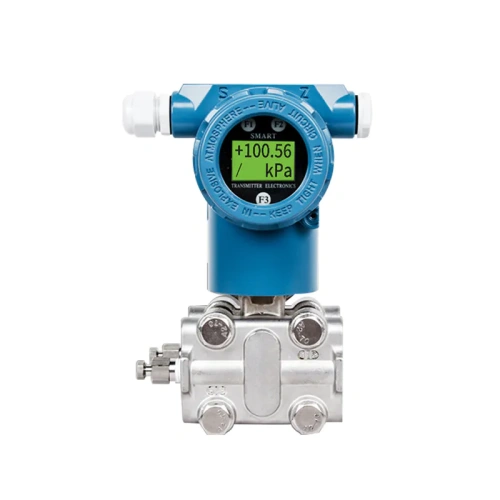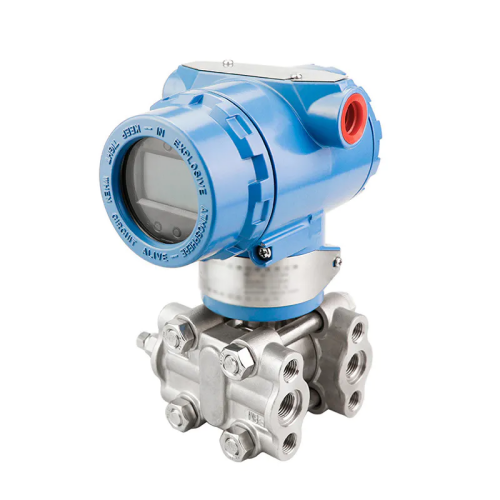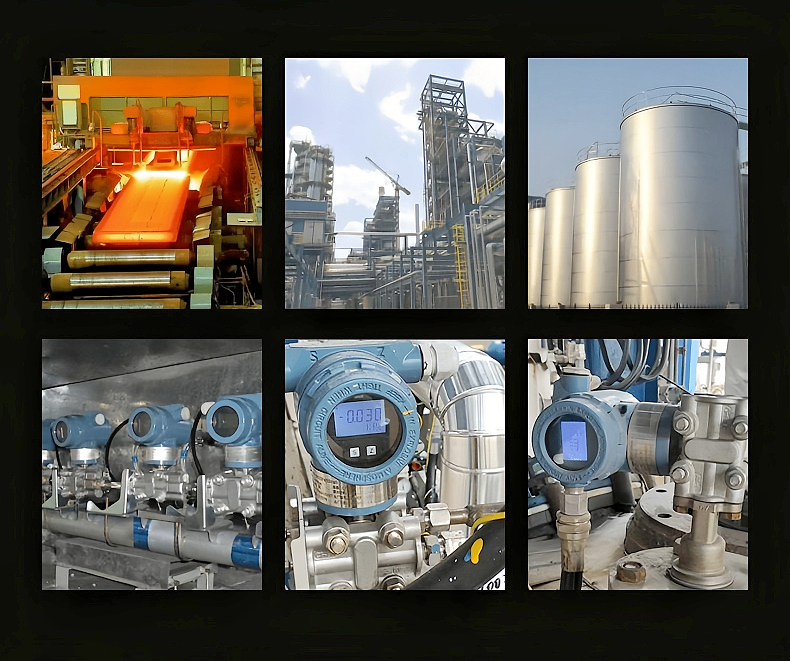BETTER TOUCH BETTER BUSINESS
Contact Sales at KAIDI.
Differential pressure from both sides of the guide tube acts directly on the isolation diaphragm on both sides of the transmitter sensor, which is transmitted to the measuring element through the sealing liquid inside the diaphragm, and the measuring element converts the measured differential pressure signal into the corresponding electric signal and passes it to the converter, which is then amplified and transformed into the standard electric signal output.

When the differential pressure transmitter measures the liquid level, if the positive and negative pressure chambers of the pressure differential transmitter are at the same level with the pressure point of the container, there is no need to migrate. In practical applications, for the installation location of the equipment and ease of maintenance and other considerations, the transmitter may not always be able to take the pressure point with the same level; and such as the measured medium is a strong corrosive or heavy viscosity of the liquid, the media can not be directly introduced into the transmitter, must be installed isolation fluid tanks, with the isolation of the liquid to transfer the pressure signal, in order to prevent corrosion of the transmitter. At this point, it is necessary to consider the medium and the isolation fluid column on the transmitter measurement value of the impact.
When the installation position of the pressure differential transmitter is often not at the same level as the lowest liquid level, in order to be able to correctly indicate the height of the liquid level, the differential pressure transmitter must do some technical processing, that is, migration. Migration is divided into no migration, negative migration and positive migration.
The so-called "migration" of the pressure differential transmitter is to move the measuring range of the transmitter in the case of unchanged range. Usually the starting point of the measurement is moved to the reference point "0" below, known as negative migration; the starting point of the measurement is moved to the reference point "0" above, known as positive migration.

Take a 30kPa range differential pressure level gauge as an example, the measurement range is 0~30kPa when there is no migration, the measurement range is 30~60kPa when there is 100% positive migration, the measurement range is -30~0kPa when there is 100% negative migration, and the measurement range is -15~+15kPa when there is 50% negative migration.
In practice, first determine the range of the differential pressure transmitter, after calibration, use the migration screw to adjust the measurement starting point or full range output to the corresponding position or use the hand manipulator to migrate the amount of direct input.
For example, if you need to measure the differential pressure from -30 to 0kPa, the range is 30kPa. When calibrating the transmitter, pressurise the negative pressure chamber by 30kPa, adjust the zero knob of the differential pressure transmitter to make its output 4mA; after that, the negative pressure chamber will not be pressurised, and adjust the range knob of the differential pressure transmitter until the output is 20mA; if you use the hand operated transmitter, set the LRV of the transmitter to -30kPa, and the URV to 0kPa. Set the transmitter's LRV to -30kPa and URV to 0kPa if using a hand operated device.
The measuring range of the differential pressure level indicator is equal to the sum of range and migration, i.e. measuring range = range + migration. Therefore, the essence of positive and negative migration is to change the upper and lower limit values of the range of the differential pressure transmitter, while the size of the range remains unchanged.
According to the principle of positive and negative migration of the differential pressure level indicator measurement level, in the practical application, according to the conditions of use of the instrument, the process of production equipment and the surrounding environment, etc., the level of the measurement method for the corresponding improvement.

The specific operation steps for commissioning are: open the balance valve first, then open the low pressure side valve, and so on, after the pressure balance between the high and low pressure chamber, gently open the exhaust holes on both sides, exhaust the residual air inside the measuring chamber, close the exhaust holes, then close the balance valve, and then open the high pressure side valve.
Exit the specific operating steps are: first close the low-pressure side of the valve, and then open the balance valve, and then close the high-pressure side of the valve, open both sides of the vent will measure the pressure inside the room to drain off, at this time the differential pressure level gauge should be zero.
We are here to help you! If you close the chatbox, you will automatically receive a response from us via email. Please be sure to leave your contact details so that we can better assist